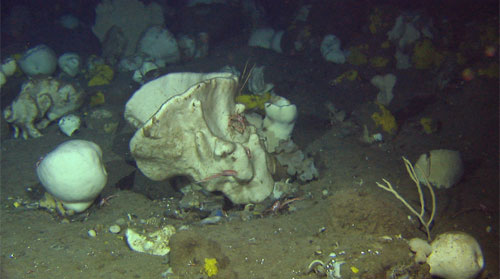Soft bottom sponge aggregations
Defined by the presence of several large sponge species (Geodia spp., Stryphnus ponderosus and Steletta spp.), often in association with the encrusting yellow sponge Aplysilla sulfurea. For shelf areas in the Southwestern part of the Barents Sea (Tromsøflaket and Eggakanten), data from the MAREANO project has demonstrated that these sponges create a bottom substrate that is a mixture of mud and sponge spicules. Sponge spicules are small needle shaped skeleton structures made of silica.
Ostur aggregations are well known by fishermen, as in these areas it is possible to caught high densities of sponges, up to several tons in a single haul.
